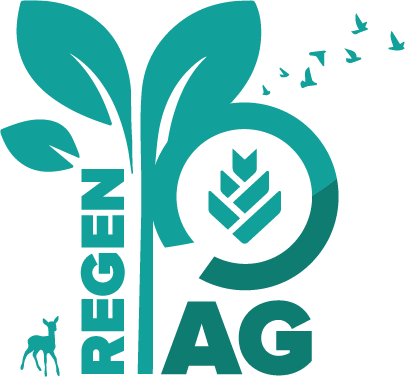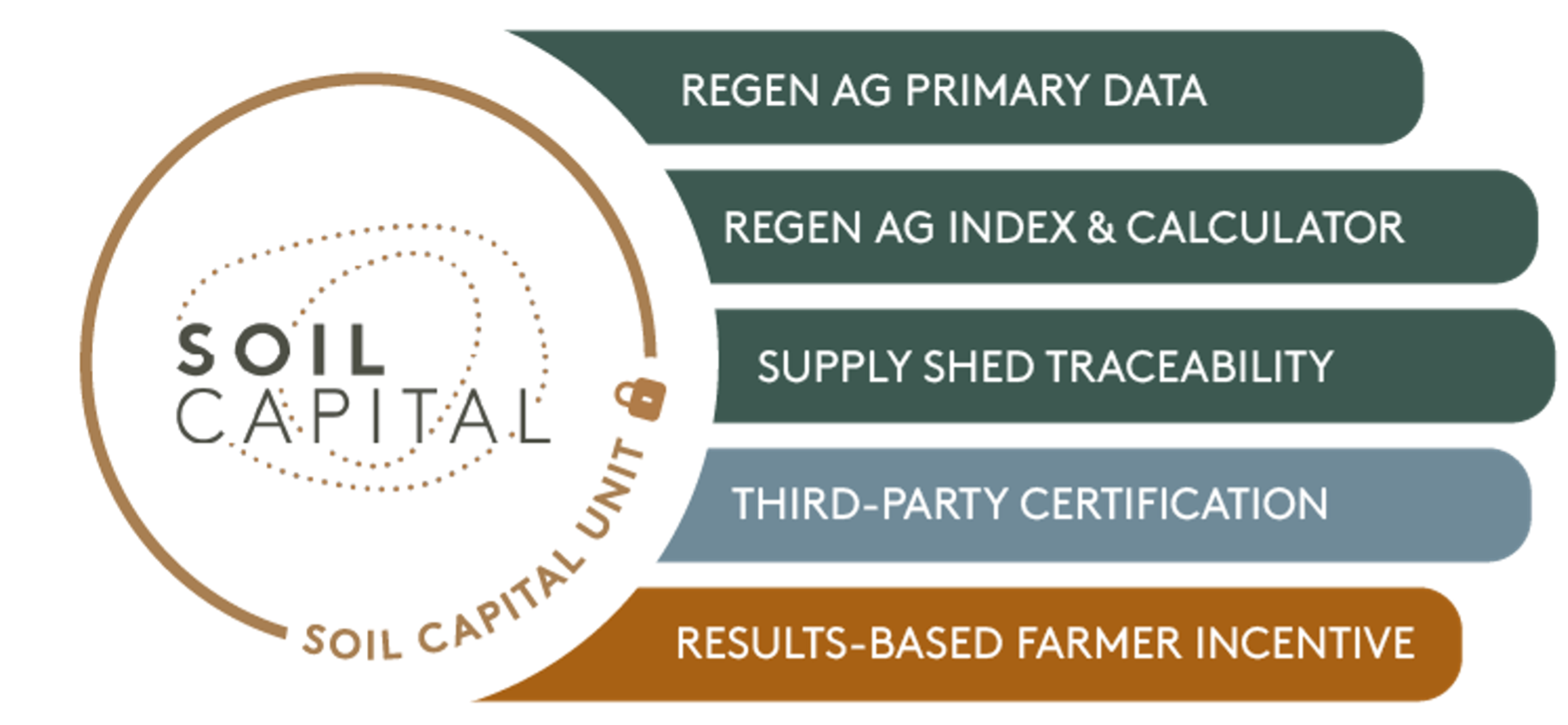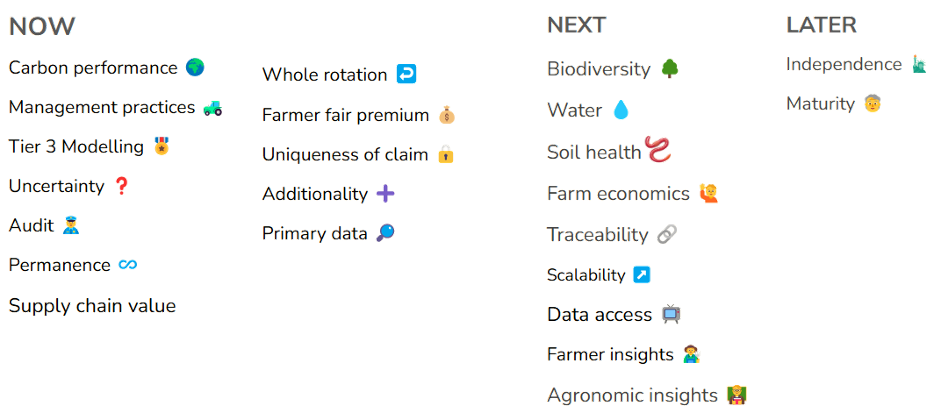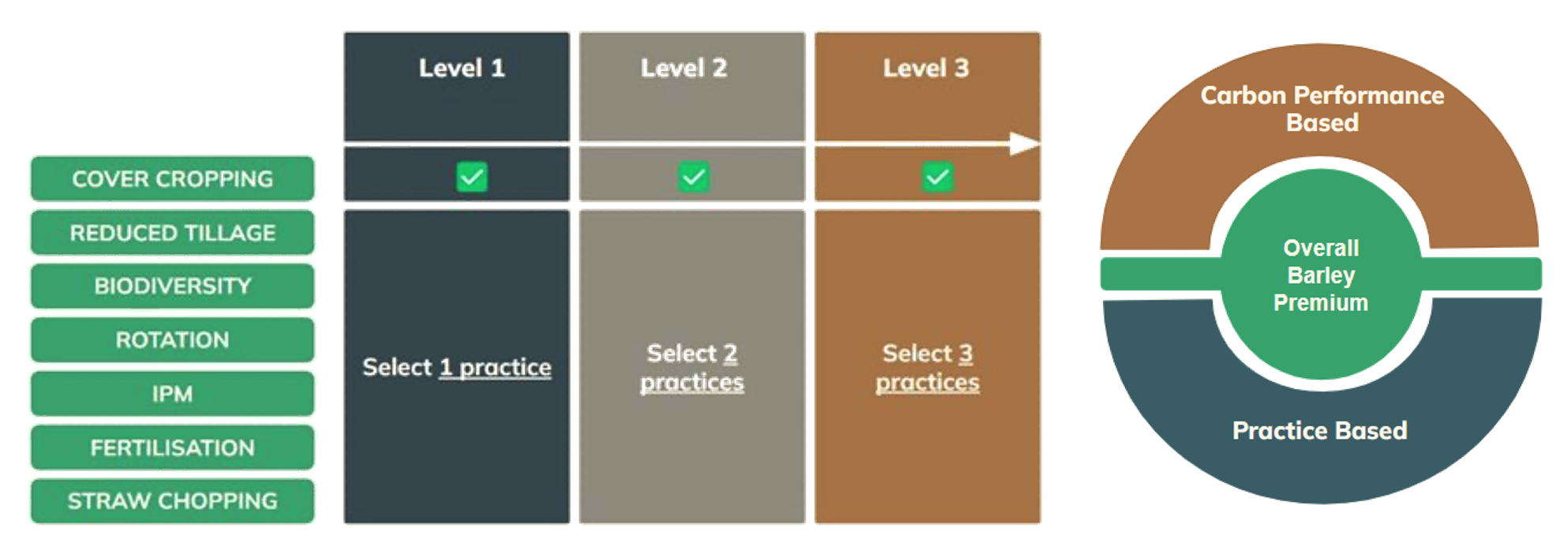

Regenerative agriculture
We are focusing on farms, investing in regenerative farming practices to ensure healthier soils, increase farmer profitability and build long-term sustainable agriculture. In doing so, we'll achieve our goal to reduce our scope 3 FLAG GHG emissions by 30.3% by 2030.
We are supporting farmers in transforming the way barley is grown. Regenerative agriculture (or Regen Ag) focuses on farming practices that restore and enhance the natural environment, improving soil health and infiltration capacity, increasing biodiversity and capturing carbon in the soil.

Practices like cover cropping, reduced tillage and crop rotation enhance soil fertility and structure, leading to better crop yields and water conservation.

We ensure farmers are fairly compensated for making the transition to regenerative agriculture, which in the long term will boost their yields.

Promoting a diverse range of plant and animal species helps create a balanced ecosystem that supports long-term agricultural productivity.

Regenerative farming captures more carbon in the soil, actively reducing greenhouse gases in the atmosphere.
Our Regen Ag Malts
To meet our own scope 3 ambitions and help you meet yours, we aim to engage at least 67% of the barley farms we work with in regen ag practices. They will significantly reduce carbon emissions, positively impact the natural environment and improve the barley crop itself, so we all benefit.
To help us achieve our goal, we've created a global mass balanced solution to bring you Soil Capital certified malt, called Regen Ag Malt. In specific markets, we’re also offering segregated supply chain products tailored to local requirements.
When you buy Regen Ag Malt, we reinvest the revenues in farms that are working to reduce greenhouse gases, increase biodiversity, improve water management, create healthier soils, boost crop yields and in doing so become more productive and profitable in the long term. Each farm receives a certificate from Soil Capital to mark their achievement.
Simply by choosing our Regen Ag Malt, you’ll be able over time to eliminate up to 100% of the carbon emissions generated by barley farming, which represent 60% of the emissions attached to your malt supply.

Yes our customers and their auditors can ask for auditable access.
Annual verification of MRV includes methodology, calculations and farmers data.
MRV tools
- SOC: DNDC (Regrow, Tier 3)
- Non-soil: Cool Farm Tool
Annual 3rd party data Verification: TUV Rheinland
ISO 14064 Standard Alignment

Yes We align with regulations and international standards :
- SBTi FLAG
- GHG Protocol – Land Sector and Removal Guidance
- Carbon Removal Certification Framework
- CSRD – EU Corporate Sustainability Reporting Directive
- ISO 14064 GHG Emissions Inventories and Verification
- Complementary compliance with SAI, CDP, ECOVADIS, B CORP
Our regenerative agriculture program is built on a supply shed model, a smart and flexible approach that ensures scalability while preserving traceability. Unlike the physical flow model, which requires strict segregation of regeneratively grown barley throughout the entire supply chain—leading to logistical complexities and higher costs—our supply shed model optimizes regional aggregation.
This means we source from farmers within a defined area, ensuring that regenerative practices are effectively implemented within our sourcing regions. By avoiding unnecessary segregations, we make the system more efficient, affordable, and adaptable, allowing more farmers to transition to regenerative practices and enabling brewers to scale up their commitments with ease. At the same time, full traceability is maintained, ensuring that the benefits of regenerative agriculture—improved soil health, carbon reduction, and enhanced biodiversity—are genuinely embedded in our customers' supply chains, making a real and measurable impact.
Traceability in our regenerative agriculture program is ensured through a Sourcing Region Approach, where farms implementing regenerative practices are grouped within a defined supply shed. Rather than tracking individual grain flows, we verify and document the impact at the regional level.
We provide verified emissions factor reports, allowing our customers to retire certificates linked to actual farmers applying regenerative practices within the agreed sourcing region. This aggregated traceability ensures transparency while maintaining flexibility, giving brewers confidence that their malt supports real, measurable improvements in soil health, carbon reduction, and biodiversity within their supply chain.
Our process ensures that regenerative agriculture benefits are measured, verified, and transparently transferred to our customers. Soil Capital quantifies and verifies emissions reductions from farmers within our supply shed, generating a Verified Emissions Factor (VEF) report. These reductions are then converted into credits, which are transferred to our customers, who can retire them to prevent double counting. This enables our customers to confidently claim the emissions reductions as Scope 3 FLAG (Forest, Land, and Agriculture) GHG reductions, aligning with their sustainability goals while ensuring real impact within their supply chain.
Boortmalt’s due diligence criteria grid goes way beyond short term emissions reduction target.

Boortmalt + Soil Capital have developed a program with a level-classification method.
An incentive for farmers to further advance in Regen Ag practices.

Our access to primary data allows full compliance with our customers’ requirements: We can screen every farmer’s data to ensure full compliance.

